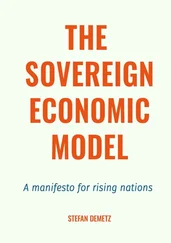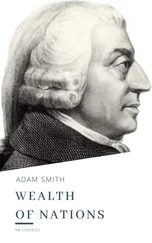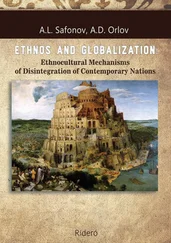The first three decades of the nineteenth century witnessed increasing social unrest in Britain, mostly in response to increasing economic inequities and demands from the disenfranchised masses for greater political representation. The Luddite Riots of 1811–1816, where workers fought against the introduction of new technologies they believed would reduce their wages, were followed by riots explicitly demanding political rights, the Spa Fields Riots of 1816 in London and the Peterloo Massacre of 1819 in Manchester. In the Swing Riots of 1830, agricultural workers protested against falling living standards as well as the introduction of new technology. Meanwhile, in Paris, the July Revolution of 1830 exploded. A consensus among elites was starting to form that the discontent was reaching the boiling point, and the only way to defuse social unrest, and turn back a revolution, was by meeting the demands of the masses and undertaking parliamentary reform.
It was no surprise then that the 1831 election was mostly about a single issue: political reform. The Whigs, almost one hundred years after Sir Robert Walpole, were much more responsive to the wishes of the common man and campaigned to extend voting rights. But this meant only a small increase in the electorate. Universal suffrage, even only for men, was not on the table. The Whigs won the election, and their leader, Earl Grey, became the prime minister. Earl Grey was no radical—far from it. He and the Whigs pushed for reform not because they thought a broader voting franchise was more just or because they wanted to share power. British democracy was not given by the elite. It was largely taken by the masses, who were empowered by the political processes that had been ongoing in England and the rest of Britain for the last several centuries. They had become emboldened by the changes in the nature of political institutions unleashed by the Glorious Revolution. Reforms were granted because the elite thought that reform was the only way to secure the continuation of their rule, albeit in a somewhat lessened form. Earl Grey, in his famous speech to Parliament in favor of political reform, said this very clearly:
There is no-one more decided against annual Parliaments, universal suffrage and the ballot, than I am. My object is not to favour, but to put an end to such hopes and projects … The principle of my reform is, to prevent the necessity of revolution … reforming to preserve and not to overthrow.
The masses did not just want the vote for its own sake but to have a seat at the table to be able to defend their interests. This was well understood by the Chartist movement, which led the campaign for universal suffrage after 1838, taking its name from its adoption of the People’s Charter, named to evoke a parallel with the Magna Carta. Chartist J. R. Stephens articulated why universal suffrage, and the vote for all citizens, was key for the masses:
The question of universal suffrage … is a knife and fork question, a bread and cheese question … by universal suffrage I mean to say that every working man in the land has a right to a good coat on his back, a good hat on his head, a good roof for the shelter of his household, a good dinner upon his table.
Stephens had well understood that universal suffrage was the most durable way of empowering the British masses further and guaranteeing a coat, a hat, a roof, and a good dinner for the working man.
Ultimately, Earl Grey was successful both in ensuring the passage of the First Reform Act and in defusing the revolutionary tides without taking any major strides toward universal mass suffrage. The 1832 reforms were modest, only doubling the voting franchise from 8 percent to about 16 percent of the adult male population (from about 2 to 4 percent of all the population). They also got rid of rotten boroughs and gave independent representation to the new industrializing cities such as Manchester, Leeds, and Sheffield. But this still left many issues unresolved. Hence there were soon further demands for greater voting rights and further social unrest. In response, further reform would follow.
Why did the British elites give in to the demands? Why did Earl Grey feel that partial—indeed, very partial—reform was the only way to preserve the system? Why did they have to put up with the lesser of the two evils, reform or revolution, rather than maintaining their power without any reform? Couldn’t they just have done what the Spanish conquistadors did in South America, what Austria-Hungarian and Russian monarchs would do in the next several decades when the demands for reform reached those lands, and what the British themselves did in the Caribbean and in India: use force to put down the demands? The answer to this question comes from the virtuous circle. The economic and political changes that had already taken place in Britain made using force to repress these demands both unattractive for the elite and increasingly infeasible. As E. P. Thompson wrote:
When the struggles of 1790–1832 signalled that this equilibrium had changed, the rulers of England were faced with alarming alternatives. They could either dispense with the rule of law, dismantle their elaborate constitutional structures, countermand their own rhetoric and rule by force; or they could submit to their own rules and surrender their hegemony … they took halting steps in the first direction. But in the end, rather than shatter their own self-image and repudiate 150 years of constitutional legality, they surrendered to the law.
Put differently, the same forces that made the British elite not wish to tear down the edifice of the rule of law during the Black Act also made them shun repression and rule by force, which would again risk the stability of the entire system. If undermining the law in trying to implement the Black Act would have weakened the system that merchants, businessmen, and the gentry had built in the Glorious Revolution, setting up a repressive dictatorship in 1832 would have entirely undermined it. In fact, the organizers of the protests for parliamentary reform were well aware of the importance of the rule of law and its symbolism to the British political institutions during this period. They used its rhetoric to bring home this point. One of the first organizations seeking parliamentary reform was called the Hampden Club, after the member of Parliament who had first resisted Charles I over the ship money tax, a crucial event leading up to the first major uprising against Stuart absolutism, as we saw in chapter 7.
There was also dynamic positive feedback between inclusive economic and political institutions making such a course of action attractive. Inclusive economic institutions led to the development of inclusive markets, inducing a more efficient allocation of resources, greater encouragement to acquire education and skills, and further innovations in technology. All of these forces were in play in Britain by 1831. Clamping down on popular demands and undertaking a coup against inclusive political institutions would also destroy these gains, and the elites opposing greater democratization and greater inclusiveness might find themselves among those losing their fortunes from this destruction.
Another aspect of this positive feedback is that under inclusive economic and political institutions, controlling power became less central. In Austria-Hungary and in Russia, as we saw in chapter 8, the monarchs and the aristocracy had much to lose from industrialization and reform. In contrast, in Britain at the beginning of the nineteenth century, thanks to the development of inclusive economic institutions, there was much less at stake: there were no serfs, relatively little coercion in the labor market, and few monopolies protected by entry barriers. Clinging to power was thus much less valuable for the British elite.
Читать дальше












